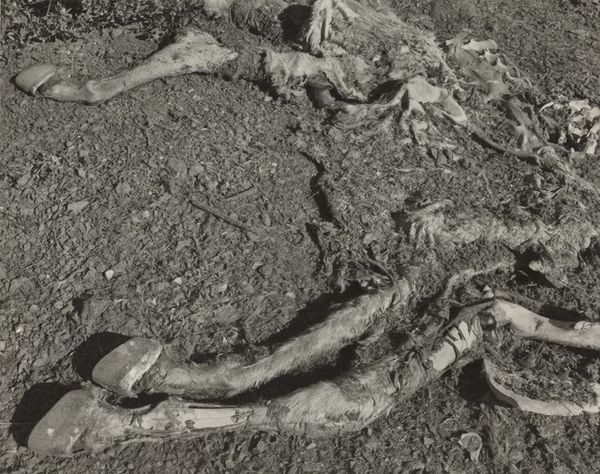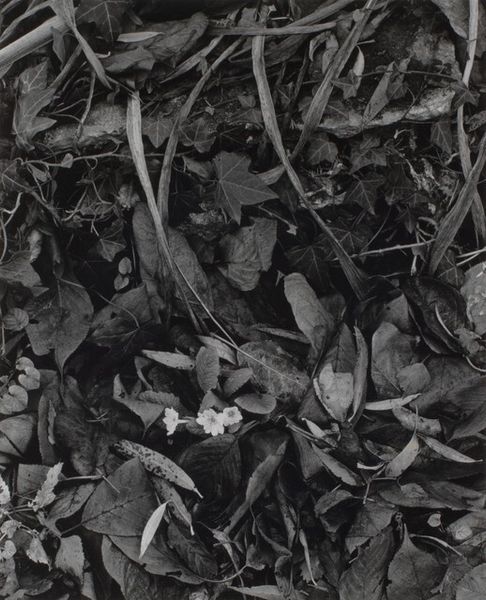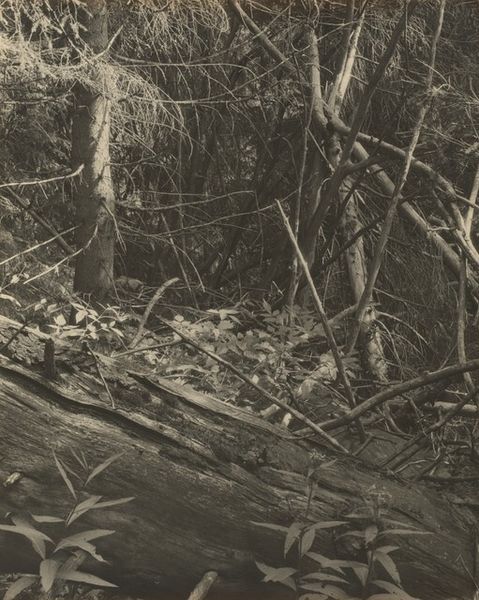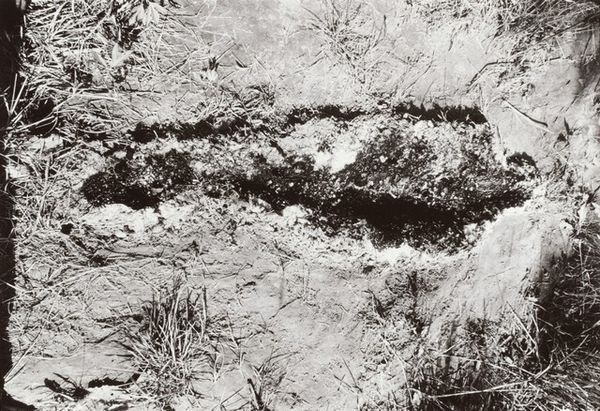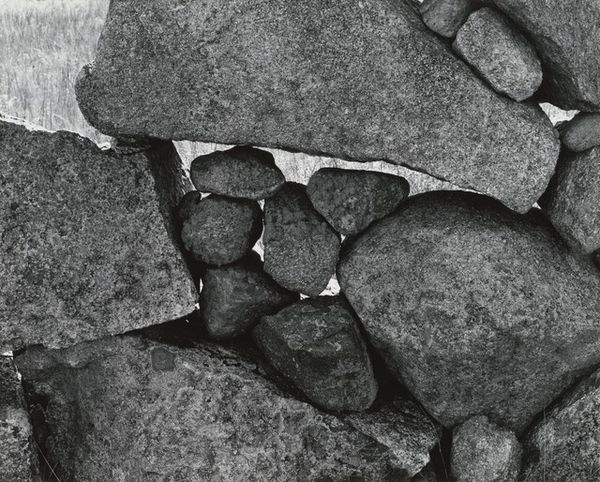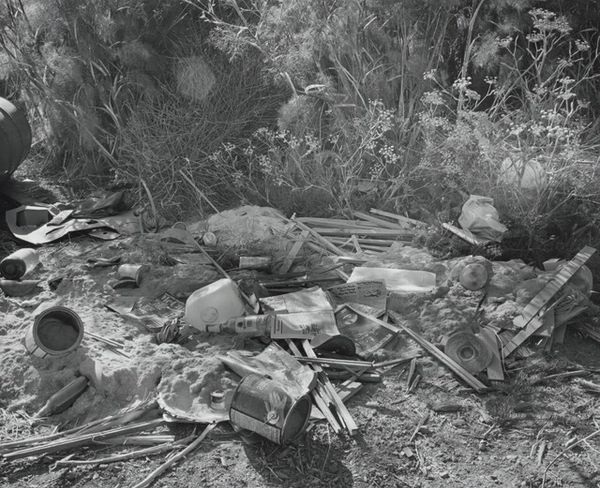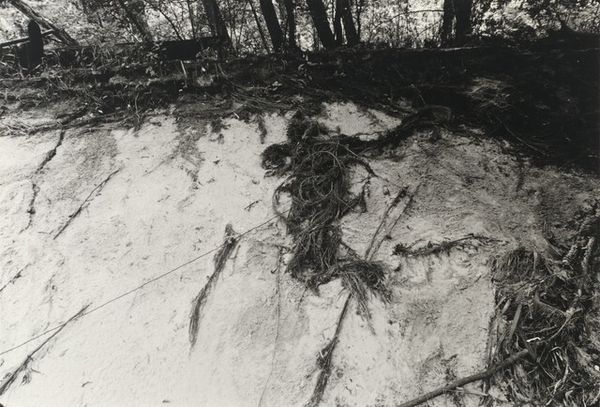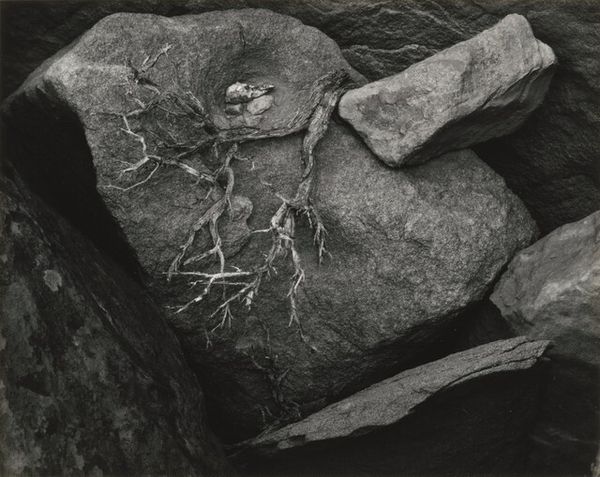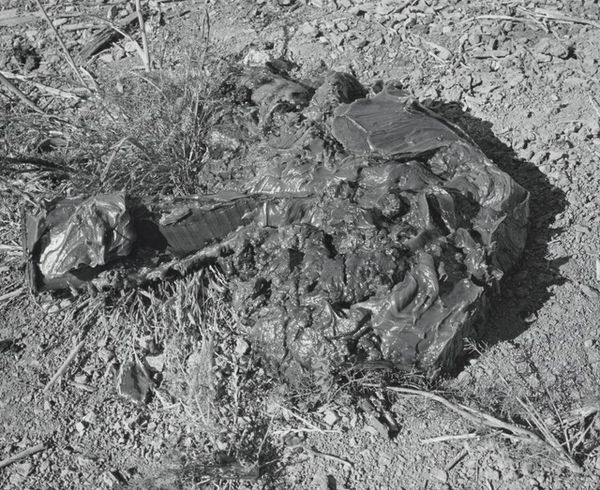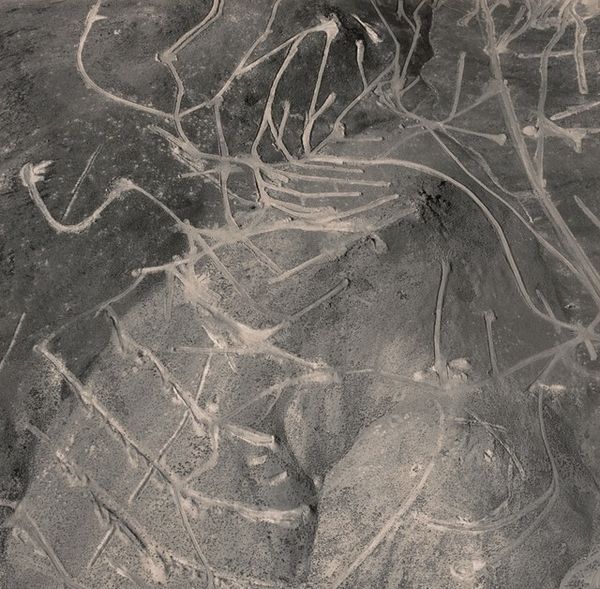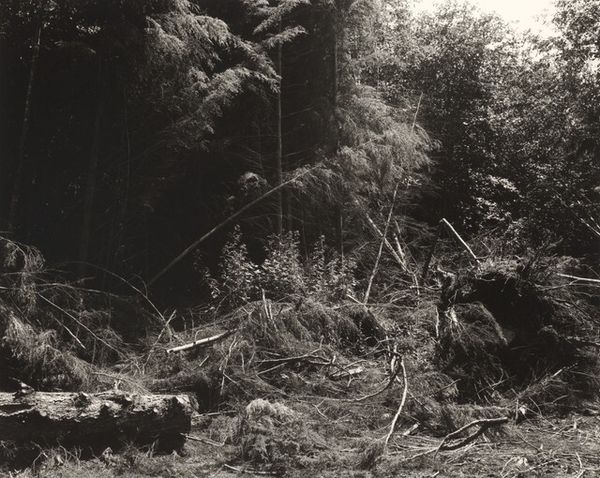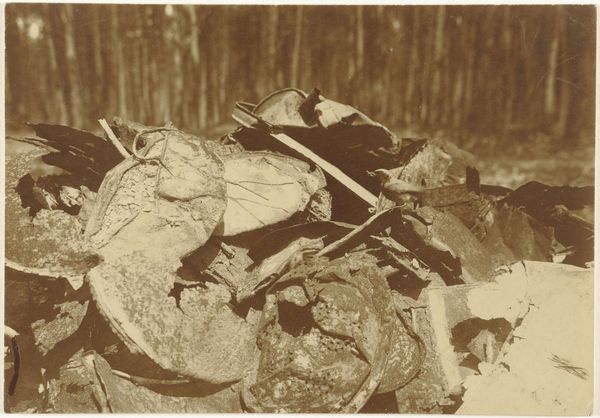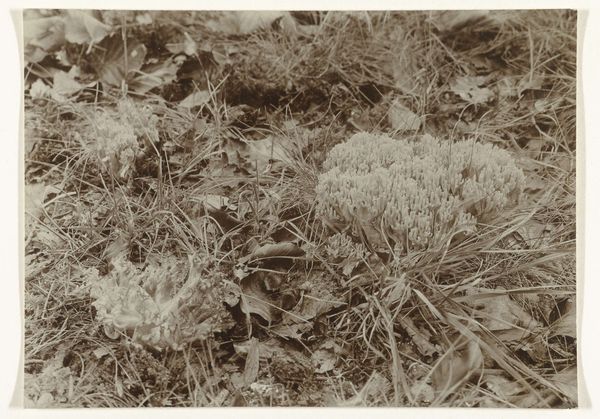
photography, gelatin-silver-print
#
sculpture
#
landscape
#
photography
#
gelatin-silver-print
Dimensions: image: 19.1 x 24.2 cm (7 1/2 x 9 1/2 in.) support: 33.5 x 38.5 cm (13 3/16 x 15 3/16 in.)
Copyright: National Gallery of Art: CC0 1.0
Editor: This gelatin-silver print, "Untitled," was made by Frederick Sommer sometime between 1951 and 1973. The high contrast between light and dark makes the rocks and detritus seem almost sculptural. What strikes you about this photograph? Curator: For me, the appeal lies in Sommer's choice to focus on seemingly mundane materials. Rocks, dirt, decaying leaves…he elevates the overlooked. It challenges the established hierarchies of what constitutes a worthy subject for art, questioning the role of photography in portraying beauty and the artifice often involved. It’s not the grandeur of nature but its discarded, granular elements. Editor: That's an interesting point about challenging established hierarchies. How does the gelatin-silver printing process contribute to that idea? Curator: The gelatin-silver print, as a readily available process, allowed for mass reproduction, historically blurring boundaries between 'high art' and accessibility. Sommer utilizes this readily accessible medium to examine our complex relationship with materiality, nature as resource, and our impact on landscapes. Notice how his meticulous darkroom work enhances the textural qualities; Sommer isn’t just capturing a scene; he’s manipulating the means of production to imbue those mundane elements with meaning. Editor: So, it's not just about the subject matter, but also about Sommer's conscious choice of process and the work he puts into it? Curator: Exactly. Sommer isn’t passively recording. He's actively shaping the material, prompting questions about consumption, value, and our interventions on the natural world through the labor of making photographs. Editor: I never really considered how the printing process itself could be such a critical part of understanding the meaning behind an image. I'll definitely be paying more attention to the materials used in other works, now. Curator: Thinking about the 'how' is as crucial as thinking about the 'what.' It’s where true understanding lies.
Comments
No comments
Be the first to comment and join the conversation on the ultimate creative platform.
